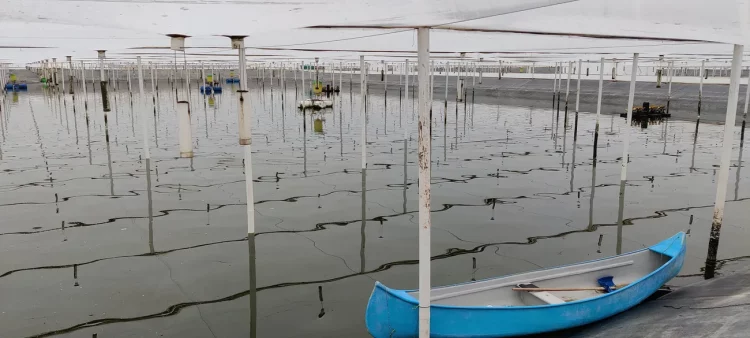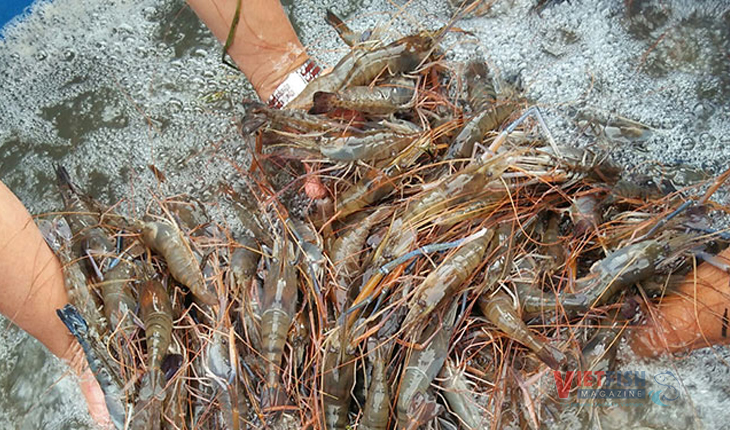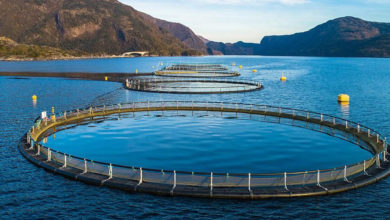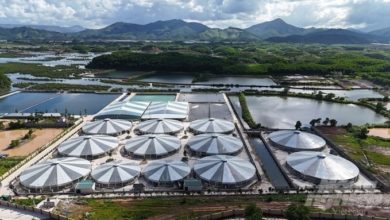Kontali’s shrimp production forecasts for 2024 and beyond
Global shrimp production is forecast to reach 5.7 million tonnes this year and 6.1 million next – up from 5.4 million in 2023 – according to Erwin Termaat, shrimp analyst at Kontali.
Termaat presented these figures at The Centre for Sustainable Seafood’s recent Shrimp Summit, which was held in Chennai. And, after the event, outlined how he had reached his conclusions to The Fish Site.
“Other parties base their forecasts on survey results, or export volumes, but what we’re doing is a bit more data-driven: not only looking at export data but also converting it to live shrimp equivalent to give a better view of what the export data actually mean. We’re also looking at feed sales, which also show trends on what’s really happening – including shrimp that are being produced for domestic consumption,” he explains.
“We’re also looking at market dynamics – we look at how markets are changing and which countries can fulfil these demands,” he adds.
Although some analysts have predicted that production in Ecuador will decrease this year, Termaat expects it to continue to grow, albeit at a lower rate that the 15 percent that it achieved in 2022 and 2023.

It’s a country that Termaat has first hand knowledge of: following his masters at Wageningen he spent a year working as a project coordinator with Grupo Almar – one of the largest shrimp producers in Ecuador, which farms across 6,000 hectares and has its own hatchery.
“We see high single digit growth this year and it picking up again in 2025, as consolidation will give them greater ability to grow, while the market has the demand,” he points out.
On the other hand, he expects Chinese production to decrease.
“They are a big producer but are also a very big importer and have been struggling quite a bit with the production side – their cost of production is quite high. Also, while their domestic production traditionally was seen as superior, consumers are increasingly impressed by the imported shrimp from Ecuador, which is way cheaper and now seen as equally good,” he observes.
Trade barriers
Meanwhile, according to Termaat, the precise impact of anti-dumping and countervailing duties imposed by the US, which shrimp exporters from Ecuador and Indonesia are now facing, is still unknown – not least as the levels have changed several times.
“The duties were first set as a preliminary number, but the preliminary numbers, especially for Santa Priscilla [the world’s biggest shrimp producer] in Ecuador, have been adjusted way downwards. We still have to wait for the final duty decisions in October – which will determine how much the companies actually pay – and probably shouldn’t attach too much value to the numbers we see at this moment,” he advises.
However, Termaat expects that they will not be hefty enough to encourage exporters from these countries to ignore one of their most lucrative markets.
“India has been on the anti-dumping list, which means that importers have to pay a cash deposit for a longer time, but nothing has really changed – they are still importing and demand is still there. And if big companies like Santa Priscilla only have to pay 3 percent countervailing duties I don’t think it will change the price or demand that much,” he reflects.
It’s a belief that Termaat supports with figures.
“Looking at the export figures from shrimp producing countries – especially from Ecuador – shrimp imports into the US in June seem to be going up again,” he notes.
Why shrimp retail prices aren’t falling
Another topic Termaat covered in his talk related to why consumers have not yet benefitted from a reduction in the farm gate prices – something that retailers have been widely criticised for.
“Our research shows that costs throughout the supply chain, including logistics, have gone up by 60-70 percent since 2018, while retail prices have gone up by 30-40 percent. This means that the cost side increased more than the retail price, which raises the question if it is still retailers that are taking the largest margin, or if the costs are lost somewhere else in the chain,” he observes.
Either way, he agrees that it’s the shrimp farmers – and consumers – who have had had the toughest times in recent years, suggesting that players towards the middle of the value chain have suffered the least.
This is why Ecuador’s more vertically integrated producers have suffered less than companies that are purely producing shrimp, Termaat explains.

Termaat expects the shrimp sector to become increasingly sophisticated as the cost of new technologies drop © Erwin Termaat
Trends and developments
Looking ahead, Termaat doesn’t expect any significant improvements in farm gate prices in the foreseeable future, citing it as “a new normal that farmers have to deal with”.
However, on a more positive note, he believes that the increasing range of technologies to help farmers are becoming ever-more affordable, and should therefore be increasingly able to help smaller scale producers to improve efficiencies and reduce production costs.
He saw the benefits of these technologies – and management practices – first hand while at Almar.
“Everything from automatic feeders, to aeration, to acoustic feeding, to optimising stocking densities for your own situation – not just going for as high a stocking density as possible but also taking into account disease management in relation to stocking densities,” he explains.
“When technology allows farms to be managed in a better way it’s going to be very beneficial for the industry,” he adds.
The outlook for India
The Shrimp Summit offered participants the chance to visit farms and hatcheries, as well as take the temperature of the host nation’s wider shrimp value chain, and Termaat returned with a fairly positive impression.
“What they need is a market to buy their shrimp and also to enhance the efficiency of their own production. It’s a difficult task for them but the interesting thing I took away from the summit was all the technological innovations being developed – offering hope, even for small farmers. Combined with all the efforts put in for marketing shrimp in India I think there’s a positive outlook for the industry there,” he concludes.
Source: Thefishsite






